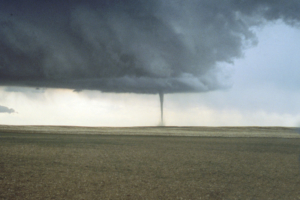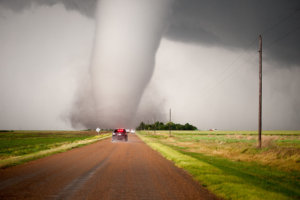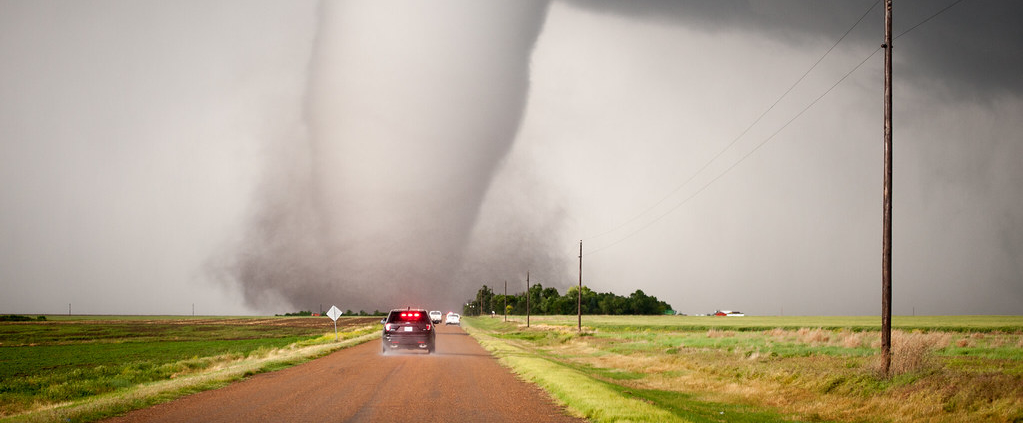Planning and Preparing for Tornadoes
Tornadoes are some of the most dangerous and destructive storms on Earth. They develop almost without warning, leaving little time to react.
Unlike other natural disasters that typically occur in a specific geographic region, tornadoes have been documented in every state. In advance of a storm, taking precautions, such as developing an emergency plan, can help you stay safe if a tornado occurs in your area. Here is some general information to begin preparing and protecting your business, assets, and people.
GENERAL INFORMATION
Also known as twisters or cyclones, tornadoes are violent, rotating columns of air that extend from the base of a thunderstorm to the earth’s surface. According to NOAA:
- Movement can range from almost stationary to more than 60 mph. A typical tornado travels at around 10-20 mph.
- Detailed statistics regarding the time a tornado is on the ground are not available; however, the average is estimated at about 5 minutes.
- There is no specific temperature at which tornadoes form. Rather, it is the relationship between the surface temperature and the temperature higher in the atmosphere.

Tornadoes have been observed on every continent except for Antarctica, with the majority – about 1200 annually – occurring in the United States, especially in a region commonly called “Tornado Alley.” First used in 1952, the term was used as the title of a study on severe weather in parts of Oklahoma and Texas by USAF meteorologists Ernest Fawbush and Robert Miller. “Tornado Alley” is a term mostly used by the media to describe a region or area with a high frequency of tornadoes. The National Weather Service and NOAA have not given an official definition to the term nor have they specified a particular area as “Tornado Alley,” The U.S. tornado threat shifts from the Southeast in the cooler months toward the southern and central Plains in May and June, and the northern Plains in Midwest during early Summer. It is important to note tornadoes can occur and have been reported in all 50 states.
The peak tornado season for the southern Plains (ex. Texas, Oklahoma, Kansas) is May to early June. On the Gulf Coast, it is earlier in the Spring. In the northern Plains and upper Midwest (North and South Dakota, Nebraska, Iowa, Minnesota) peak season is June and July.
HOW TORNADOES FORM
Before thunderstorms develop, winds change direction and increase in speed with altitude. This creates an invisible, horizontal spinning effect in the lower atmosphere.
Rising air within the thunderstorm updraft tilts the rotating air from horizontal to vertical. An area of rotation now extends through much of the storm. Most tornadoes form within this area of strong rotation.
KNOW THE TERMS
Air Pressure: Also known as barometric pressure, this is the weight of a column of air that extends from the surface (ground or water) to the top of the atmosphere. A tornado has very low air pressure.
Funnel Cloud: A rotating column of wind that has not touched the ground. Funnel clouds are called tornadoes when they reach the ground.
Gustnado: A whirl of dust or debris at or near the ground with no condensation funnel which forms along the gust front of a storm.
Hail: Frozen precipitation (ice) that forms in mid-latitude thunderstorms.
Jet Stream: A powerful but narrow stream of wind that is in the upper troposphere.
Landspout: The term for a weak tornado that looks like a waterspout.
Multi-Vortex Tornado: A tornado that has two or more sub-vortices that circle the center of a larger tornado.
Supercell: A dangerous type of thunderstorm that has a rotating updraft. These types of thunderstorms can last for hours and produce large hail, flooding, lighting, strong winds and tornadoes.
Tornado: A violent, funnel-shaped rotating column of air that has contact with the earth’s surface and is extended from a thunderstorm base.
Tornado Outbreak: The occurrence of multiple tornadoes spawned by the same synoptic scale weather system.
Tornado Warning: A tornado warning is issued when an actual tornado funnel has been sighted or detected by weather radar.
Tornado Watch: A tornado watch is issued when the weather conditions in a specific area or region are favorable for the development of a tornado.
Waterspout: A tornado that occurs over a body of water.
BEFORE A TORNADO

“Dodge City KS Tornado 3” by fireboat895 is licensed under CC BY 2.0
- Test your business continuity and disaster recovery plan specific to a tornado event and gather key stakeholder and first responder feedback.
- Plan how you will re-route phone calls. Consider the possibility you may not have cellular service in the event of a widespread blackout.
- Review your shelter-in-place plan, making sure your disaster kit is fully stocked and fresh batteries and supplies are included.
- Back up all data daily. If your backup site is within the area that may be affected by the storm, consider backing up to a secondary location or the cloud.
- Protect and secure vital records and critical business documents.
- Know the difference between a tornado watch and a tornado warning.
- Have medical supplies on hand.
- Ensure all mobile device settings allow emergency alerts.
- During an actual event with the potential for tornadoes:
- Stay up to date on the progress of the storm via radio, TV or NOAA. Verify you can follow weather updates if there is a power loss.
- Monitor for dark, greenish sky, large hail, low-lying clouds (particularly if rotating), and a loud roar (like a freight train).
DURING A TORNADO
- Follow the instructions given by local emergency management officials.
- If you are inside, stay away from windows and seek cover in a basement. If you do not have a basement, go to the lowest floor of the building and seek shelter in a small center room (such as a bathroom or closet), under a stairwell or in an interior hallway with no windows.
- If you are caught in the middle of a tornado while in your car, shelter in place.
- Keep employees informed via an emergency notification and incident management system.
FOLLOWING A TORNADO
- Account for all employees. Address staff injuries; call 911 for those needing urgent medical attention.
- Keep listening to radio, TV, and NOAA updates to ensure the storm and all threats have passed.
- Continuously refer to the business continuity and disaster recovery plan to help determine appropriate steps for triage, recovery and continuing business operations.
- Wait until the area is declared safe before entering to secure the site and survey damage. Call in key personnel and deploy your security vendors to triage systems and initiate repairs based on priority and ability to reach locations. Ensure safety protocols are in place before repairs begin; control smoking and monitor for open flame sources. Require contractors to share responsibility for fire-safe conditions before and during repairs.
- Remain observant for safety hazards: live wires, leaking gas, flammable liquids, poisonous gas and damage to foundations.
- Remove all debris. Cover broken windows and torn roof coverings immediately.
- Obtain 24-hour security and generators, if needed, depending upon the extent of damage.
- Separate and secure damaged goods for insurance purposes.
- Continue to communicate with employees and customers through all stages of recovery.
- Review your plan to determine what worked and what areas needed improvement.
Our security consultants have decades of experience advising regional and global clients across numerous industries including automotive, construction, energy, financial, real estate and more. GMR 410’s services help create a safe environment with thorough threat assessments, policy and procedure review and development, and security audits. Unfortunately – and often without warning – a crisis occurs. Such events may include natural or man made disasters or criminal activities. Tap into GMR 410’s experience to ensure that you and your teams are prepared to respond to any crisis management or emergency.
Mary Gates is a vice-president of GMR 410, LLC, a risk-solution security consulting firm and wholly owned subsidiary of GMR Protection Resources Inc. Learn more at www.gmr410.com.



